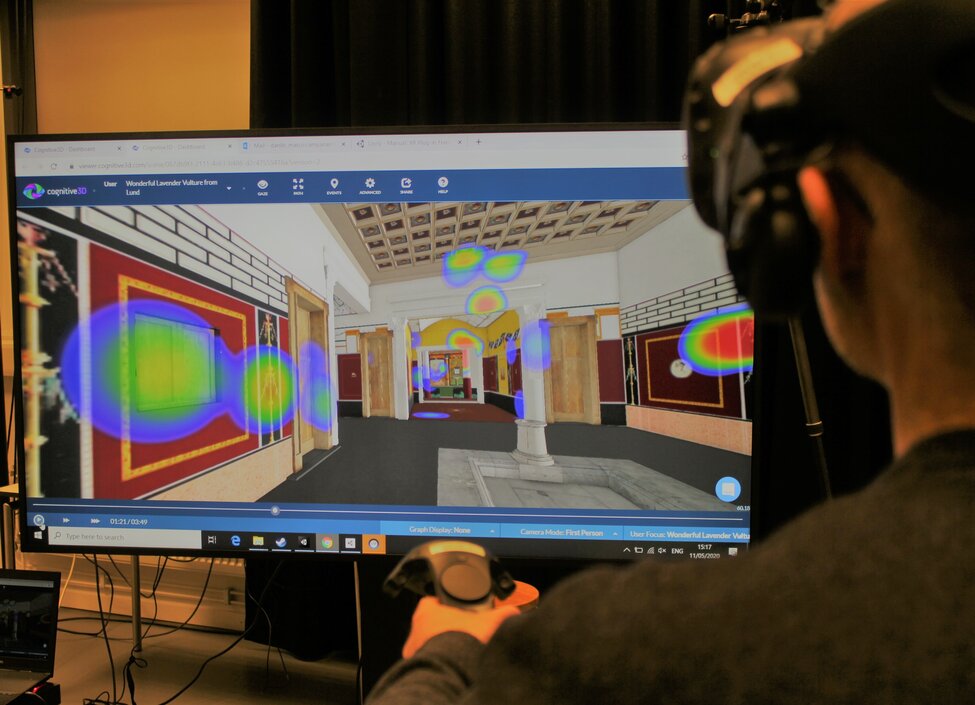A project conducted at the Department of Archaeology and Ancient History, Lund University, in collaboration between the Digital Archaeology Lab (DARKlab) and the Humanities laboratory has allowed to test a workable pipeline to integrate Virtual Reality-based Eye-Tracking with GIS analytic tools. A sample of users moved in virtually reconstructed 3D space of a historical building (the House of the Greek Epigrams in Pompeii) with the goal of performing well/defined tasks. These tasks were performed according to different illumination conditions, that were set based upon photometric and historically accurate parameters in order to provide a ‘controlled’ and parametrized simulation environment in which to transparently investigate historical hypotheses.
3D G[eye]S! Integrating 3D Eye-Tracking and 3D GIS technologies in Archaeology
Published 7 April 2021

A project conducted at the Department of Archaeology and Ancient History, Lund University, in collaboration between the Digital Archaeology Lab (DARKlab) and the Humanities laboratory has allowed to test a workable pipeline to integrate Virtual Reality-based Eye-Tracking with GIS analytic tools.
2024-04-04
Upcoming workshop on advanced 3D archaeological documentation and linked open data!
2024-02-09
New article by Paola Derudas & Brendan Foley published in Acta Archaeologica!
2024-01-30
Research at Geomatics, Karlstads universitet
2023-11-07
New article on semantic modelling of archaeological excavation data!
2023-11-02
Tuesday lecture in digital archaeology at the Blekinge Museum!
